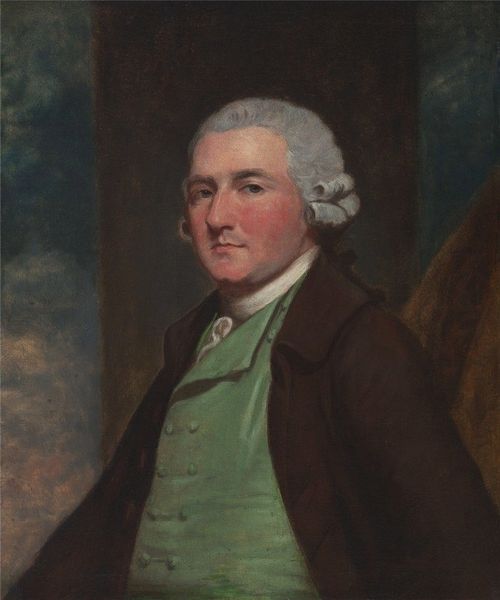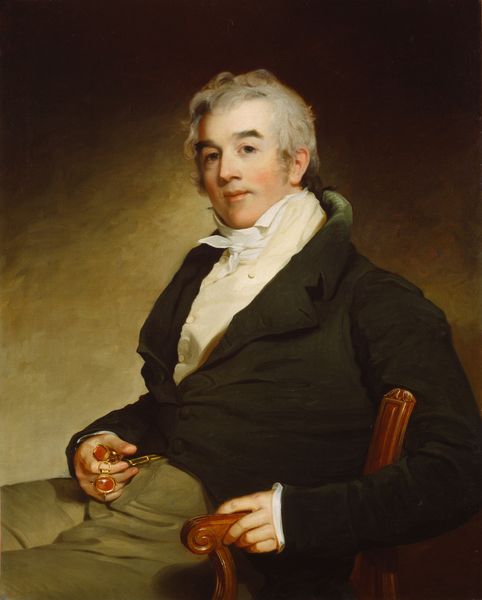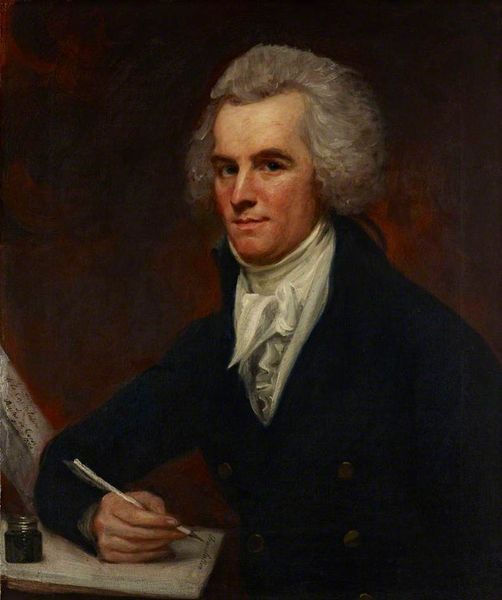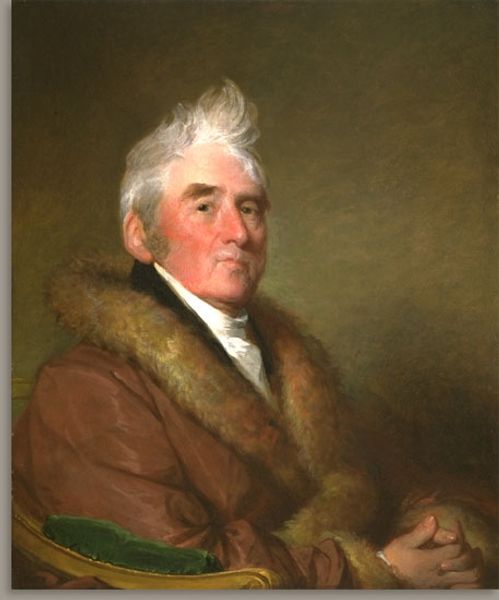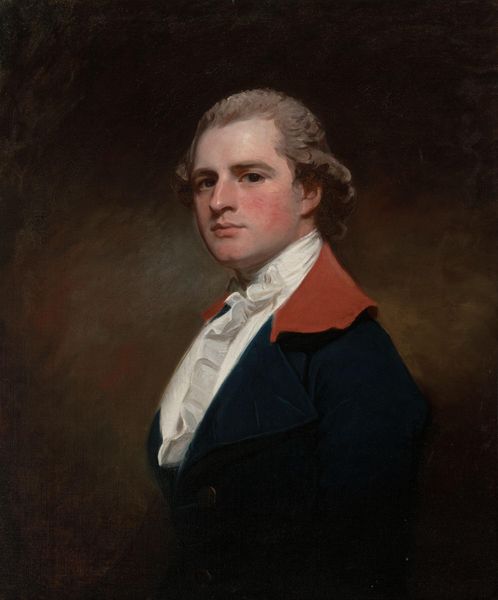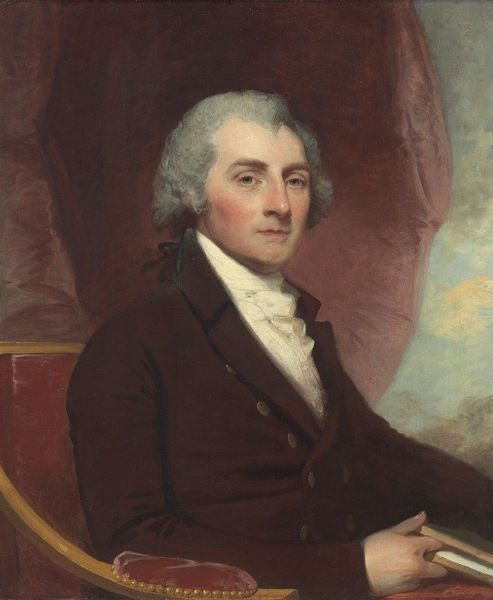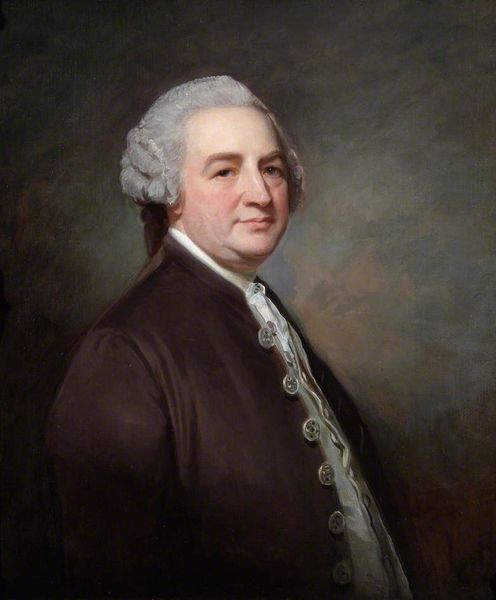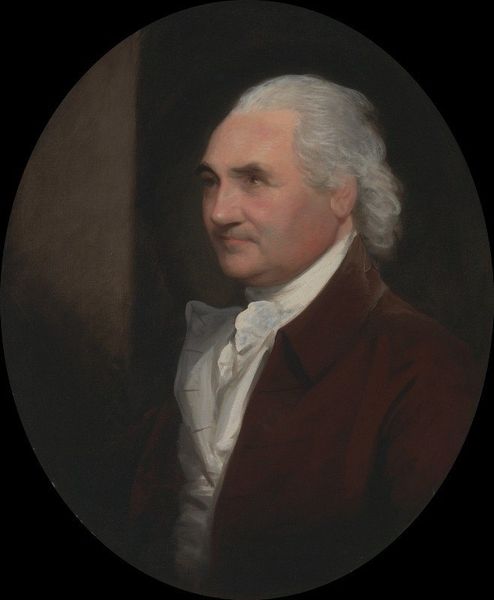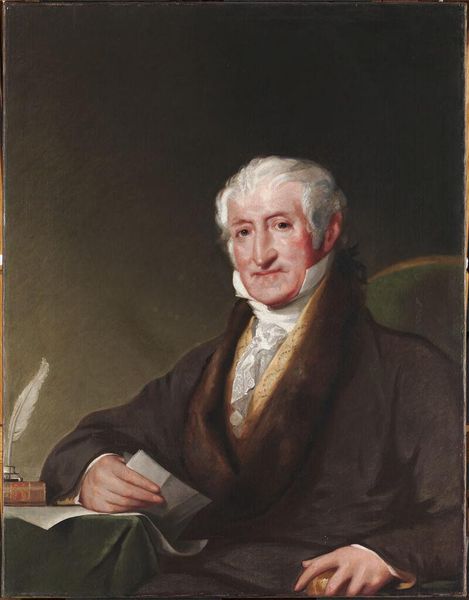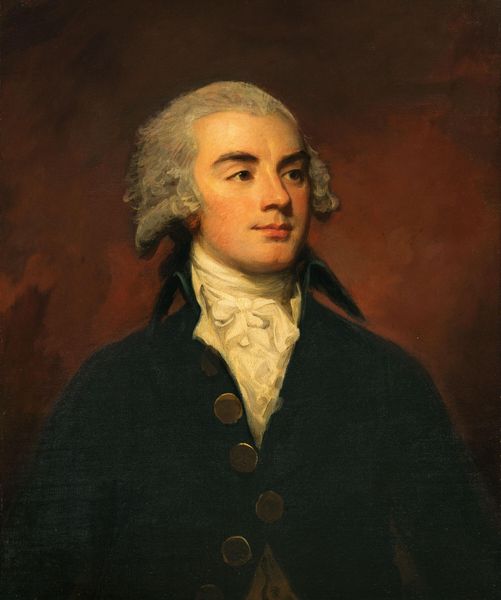
painting, oil-paint
#
portrait
#
self-portrait
#
portrait
#
painting
#
oil-paint
#
romanticism
#
realism
Copyright: Public Domain: Artvee
Curator: There's a stillness and self-assuredness about this portrait. Editor: It definitely projects a strong sense of inner resolve. We're looking at John Trumbull's "Self-Portrait," believed to have been painted around 1802. Curator: The objects surrounding him—the brushes, the palette—these aren’t just props. They’re symbols of his identity, tools through which he shapes his vision of the world. The cool palette gives way to a confident presence. Editor: Absolutely. And considering Trumbull’s history, it speaks volumes. He was more than just an artist. Trumbull was a veteran of the American Revolutionary War and, indeed, something of a controversial figure in his own right. So a self-portrait allows him a certain mode of self-definition. How do you portray someone portraying themselves? Curator: The careful staging, the calculated display of his implements. It evokes a feeling of a ritual, of preparation. Trumbull appears self-possessed but it might hide a subtle commentary on the performative aspect of portraying oneself. Editor: I see the layering of selfhood that way too. His piercing gaze directs outwards, sure, but the overall mood conveys both self-reliance and the weight of historical moment. His class and position become as palpable as the impasto brushstrokes in oil paint. There's an entire societal narrative subtly enmeshed in this canvas, too: of patriarchy and the construction of the artist. Curator: Right! And in the Romantic era, artists increasingly explored their own emotional landscapes through these visual symbols. Trumbull positions himself as an individual uniquely equipped to interpret the signs of the times. Editor: In that vein, Trumbull’s "Self-Portrait," beyond being merely representational, engages directly with the question of power, of authority, of shaping narrative, isn't it? What does he want future viewers to know of him, his contributions? Curator: Precisely. In that sense, it feels as vital today as it did two centuries ago, doesn’t it? Editor: Indeed, perhaps even more so, reminding us of art's intersection with the narratives it both mirrors and shapes.
Comments
No comments
Be the first to comment and join the conversation on the ultimate creative platform.
